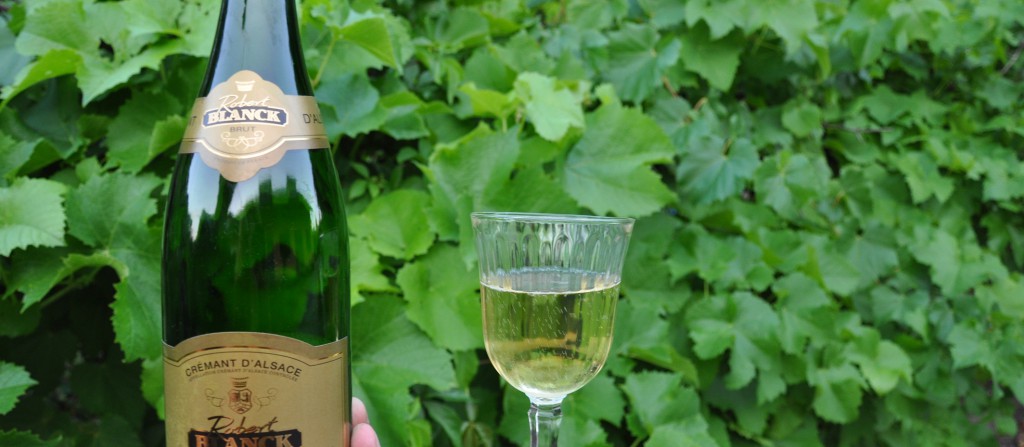In contrary to the rest of France – like the wines from Burgundy or Châteauneuf du Pape which focus on the appellation – the wines in Alsace are often named after the grape variety.
The wine is bottled on distinctive, long-necked bottles, called Flütes d’ Alsace and this is part of the reason, why Alsatian wine is so well-known in Europe. The wines are crisp, fruity and charming and between the seven very different grape varieties – Muscat d`Alsace, Sylvaner, Riesling, Pinot Blanc, Pinot Gris, Gewurztraminer and Pinot Noir – you have the full pallet, from the very dry and light to wines, that are strong, nuanced and almost opulent.
Here’s a quick guide to the most famous grapes:
Muscat d`Alsace
The dry, velvety and flower-scented wines from Muscat d´Alsace shouldn’t be confused with the Muscats of southern France, which are known for their sweet taste. A Muscat d’ Alsace wine is splendid as an aperitif and a wonderful companion to asparagus.
Sylvaner
These wines are fresh and light with a discreet taste of flowers. They are agreeable, thirst-quenching, sometimes lively wines, that go well with seafood, salads and charcuterie and are popular in Europe.
Riesling
Riesling is considered to be one of the best white grapes in the world – especially when cultivated in Alsace. The grape transforms into a dry, classy and delicate wine with mineral and fruity features. Some Rieslings can, with their amount of acidity, be a challenging first encounter, but as one becomes more familiar with them, they provide many delightful experiences.
It is a evident wine for most seafood starters – especially with sushi and other Asian specialties, as the minerals suit these dishes very well. A strong Riesling, like a Grand Cru, is the perfect match for white meat and poultry. Try it with the famous Alsatian sauerkraut or choucrute (a kind of sour cabbage) – It tastes better than it sounds!
Pinot Gris
This grape gives birth to some dry, rich wines with a strong, round and long aftertaste. The aroma seems almost smoked with a hint of sweetness, and this makes the wine ideal for foie gras as well as oily, strong tasting fish like smoked salmon. The Pinot Gris is also a fine choice for duck, which demands a wine, that is both refreshing and has a certain “fattiness” to it. The wine is also a nice companion to smoked ham, game, white meat and variety meat.
Gewurztraminer
The Gewurztraminer is, with its body, fullness, spicy flower-scent and excellent potential for maturing in the wine cellar, the most characteristic grape in Alsace. (Gewurtz is derived from German, meaning “spiced”). It’s a strong-flavored and seductive wine with a natural sweetness to it, which makes it an ideal companion to foie gras. Matching it with thai or other exotic food is another great choice, as it complements the spicy dishes and varies nicely between the sweet and the acid. Gewurztraminers are also enjoyable with game, white meat, strong cheese and desserts. With it’s pleasant note of elderflower, it’s pure summer in a glass!
Pinot Noir
Pinot Noir is the only red grape in Alsace. It’s used for rosé and light red wines, and the grape – cultivated in this area – offers a fresh and delicate wine with a hint of cherry. These wines suits red meat, game and charcuterie.
If you want to learn more about French wines, check out #vendages – our day as grape pickers at the wine harvest, a Crash Course in Burgundian wine, an introduction to the dark reds of Châteauneuf or our walk through the warm vineyards and cool cellars of Saumur.
Cheers!
Learn more


